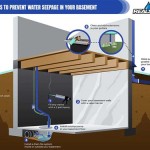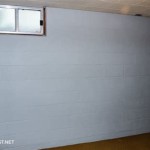How to Effectively Reduce Moisture in Your Basement
Moisture in the basement is a common problem that can lead to a host of issues, including mold, mildew, rot, and structural damage. Fortunately, there are a number of things you can do to reduce moisture in your basement and keep it dry and healthy.
1. Identify and Fix Leaks
The first step in reducing moisture in your basement is to identify and fix any leaks. Leaks can be caused by a variety of factors, including cracks in the foundation, holes in the walls, or faulty plumbing. Once you have identified the source of the leak, you can take steps to fix it, such as sealing cracks with caulk or replacing damaged pipes.
2. Improve Ventilation
Good ventilation is essential for preventing moisture buildup in your basement. Make sure that your basement has at least one window or vent that can be opened to allow air to circulate. You may also want to install a dehumidifier, which can help to remove moisture from the air.
3. Grade the Ground Away from Your Home
The ground around your home should be graded so that it slopes away from the foundation. This will help to prevent water from pooling around your home and seeping into the basement. If the ground is not graded properly, you may need to hire a contractor to regrade it.
4. Install a Sump Pump
A sump pump is a device that can help to remove water from your basement. Sump pumps are typically installed in the lowest part of the basement and are activated when the water level reaches a certain point. If your basement is prone to flooding, installing a sump pump can be a good way to prevent water damage.
5. Dehumidify the Air
Dehumidifying the air in your basement can help to reduce moisture and prevent mold and mildew growth. Dehumidifiers work by removing moisture from the air and collecting it in a reservoir. You can empty the reservoir as needed.
6. Use Moisture-Resistant Materials
When finishing your basement, use moisture-resistant materials, such as mold-resistant drywall and paint. These materials will help to prevent moisture from damaging your basement walls and floors.
7. Store Items Properly
Avoid storing items in your basement that can absorb moisture, such as cardboard boxes and paper. Store these items in a dry place instead. If you must store items in your basement, place them on shelves or in plastic bins to keep them off the floor.
8. Inspect Your Basement Regularly
Inspect your basement regularly for signs of moisture, such as mold, mildew, or water damage. If you find any signs of moisture, take steps to address the problem immediately.
Conclusion
By following these tips, you can reduce moisture in your basement and keep it dry and healthy. A dry basement will be more comfortable and inviting, and it will also be less likely to develop problems such as mold, mildew, and rot.

Moisture In Basements Causes And Solutions Umn Extension

3 Ways To Prevent Humidity In A Basement Wikihow

Overview Dehumidification In The Basement Or Crawl Space

6 Causes Of Basement Moisture How To Fix Them

How To Reduce Humidity In A Basement Thermopro Blog

How To Control Moisture In Basement Maramani Com

Get Rid Of Humidity In A Basement Without Dehumidifier

How To Prevent Moisture Problems In The Basement Dki Services

8 Ways To Eliminate Basement Moisture Northeast Property Restoration

How To Get Rid Of Humidity In A Basement Without Dehumidifier
See Also








